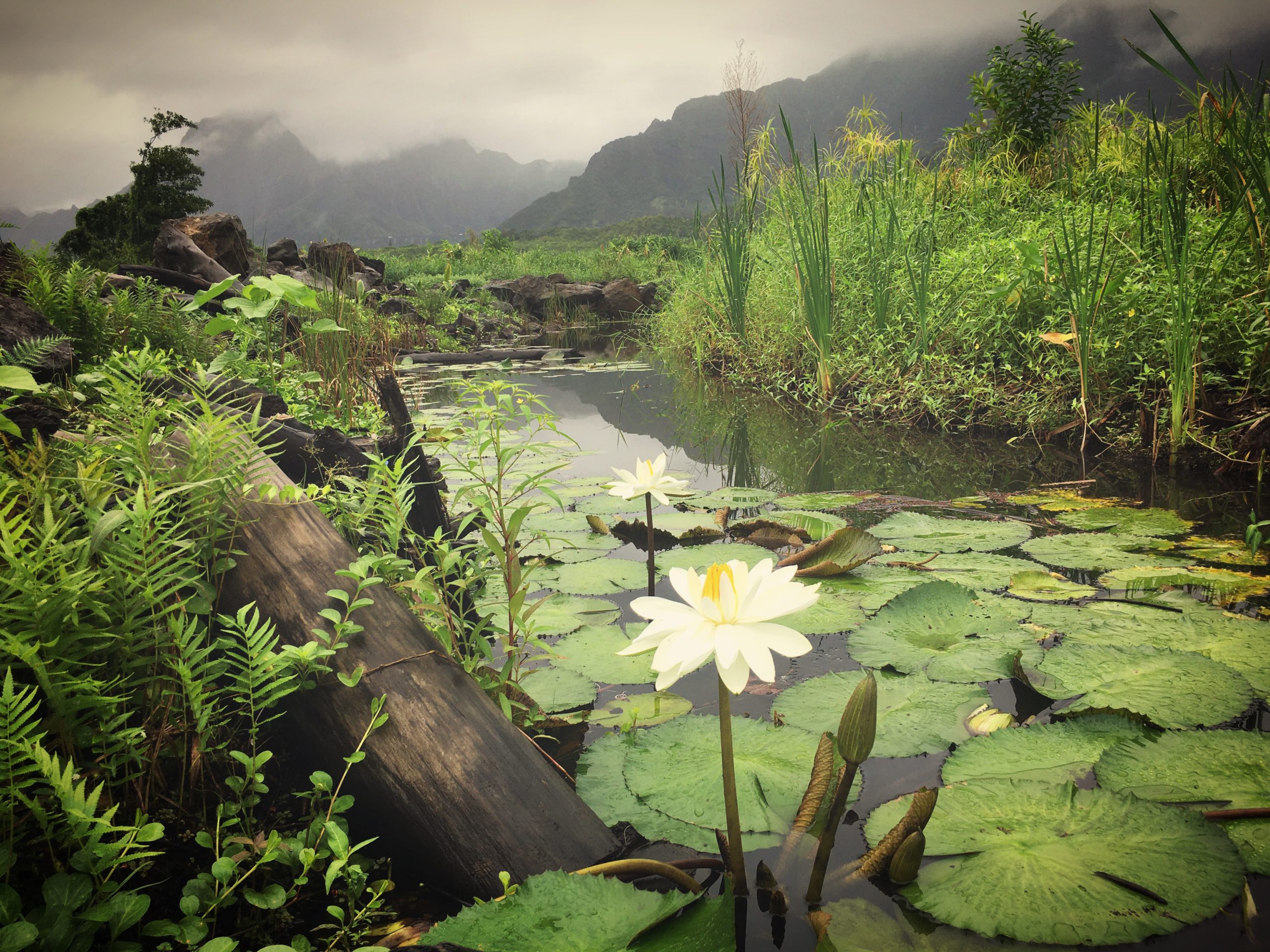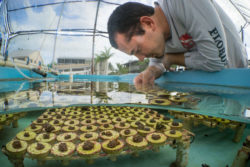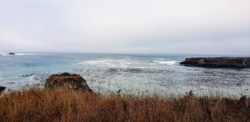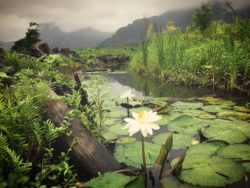
Restore our Blue Planet: Building Back Bluer in our National Marine Sanctuaries
Earth Day 2021 celebrates restoring our Earth. Globally, scientists estimate we have lost between one-third to one-half of vulnerable marine habitats. The United Nations declared 2021–2030 the “decade of restoration” to scale up efforts to build resilience to climate and anthropogenic change and reverse biodiversity loss.
America’s ocean covers almost 4.5 million square miles, an area 23 percent larger than our Nation’s landmass. With the world’s second largest Exclusive Economic Zone, and spanning more than 10 Large Marine Ecosystems, the U.S. plays a critical role in conserving and restoring habitat and biodiversity within the one global ocean.
Habitat conservation and restoration are critical to U.S. coastal communities. Many communities rely on commercial activities related to healthy marine ecosystems and watersheds. These activities include recreational and commercial fishing, tourism, and recreation. Healthy ecosystems also support a high quality of living in these areas and provide natural infrastructure to protect life and property.
At the National Marine Sanctuary Foundation we celebrate our ocean guardians who are working to restore marine wildlife and habitats.
Mission: Iconic Reefs

Mote Marine Laboratory on Summerland Key developed a micro-fragmentation and fusion method to speed the growth of crucial reef-building species. Photo: Mote Marine Laboratory and Aquarium
Florida Keys National Marine Sanctuary is a treasured place in our ocean. It protects an ecosystem unlike any in the world including the nation’s only continental barrier reef. The sanctuary is home to miraculous species, many of which rely on the coral reefs of the Florida Keys. Yet, these ecosystems that support incredible biodiversity and provide critical ecosystem services are dying. Coral reefs are threatened by hurricanes, heat-inducing bleaching, cold snaps, disease, marine debris, invasive and nuisance species, and increased human use. The degradation of these reefs spurred an unprecedented, bold undertaking to restore them called Mission: Iconic Reefs.
Mission: Iconic Reefs is a first-of-its-kind, ecosystem-scale reef restoration in coordination with NOAA and a network of partners. The goal is to restore seven ecologically and culturally significant coral reefs within Florida Keys National Marine Sanctuary. Supported by a grant by the National Fish and Wildlife Foundation, the National Marine Sanctuary Foundation is working with Mote Marine Laboratory & Aquarium and Coral Restoration Foundation to restore Eastern Dry Rocks, one of the seven iconic reefs. Alongside other partners, the team will plan and coordinate restoration activities, support research into reef restoration, and engage local business and residents in community stewardship activities that contribute to coral restoration success. Specifically, the project will undertake the outplanting of more than 60,000 staghorn and elkhorn corals, and engage professional divers and community stewards to clear nuisance species and debris from the reef to prepare and maintain the restoration site. Lastly, the partners will monitor the restoration’s success and its benefits to coastal resilience.
Stay up to date on the project and learn more about Mission: Iconic Reefs at marinesanctuary.org/mission-iconic-reefs/.
Kelp Restoration & Recovery

A view of the kelp canopy in Greater Farallones National Marine Sanctuary. Photo: Abby Nickels/Greater Farallones Association
On the West Coast, the National Marine Sanctuary Foundation is providing support to Greater Farallones Association (GFA) and Greater Farallones National Marine Sanctuary to tackle kelp forest loss. Within the waters of the sanctuary, lush forests of kelp once thrived. Kelp forests not only provide habitat for countless fish, marine mammals, and invertebrates, but they also provide critical ecosystem services like carbon sequestration and coastline protection. Unfortunately, a combination of ecological stressors suppressed kelp growth and fostered a boom in one of kelp’s major predators: sea urchin. Over a short period of time, this dangerous combination resulted in an estimated loss of over 90% of kelp forest canopy in the region.
Restoring this vital ecosystem is no easy task but passionate partners and a community of dedicated individuals, organizations, Tribes, and agencies are working towards the solution. The Farallones Kelp Recovery Program, a joint program of the GFA and Greater Farallones National Marine Sanctuary, is implementing strategies for kelp restoration, monitoring, research and community engagement and making great strides towards fostering kelp recovery. Funded by the Foundation and through an incredible collaboration with The Nature Conservancy and numerous academic partners, the Greater Farallones team initiated one of the largest marine mapping projects using drones to ever take place in California. This is the first assessment of regional kelp beds since 2016 and data will be critical for strengthening kelp management and restoration efforts.
Moving forward, the project will continue to pursue innovative ways to restore kelp forests in the sanctuary. To address the grazing pressure from urchins, our partners have teamed up with California commercial urchin divers who have the knowledge, expertise, and equipment to conduct large-scale urchin removals. Through a collaboration with Moss Landing Marine Laboratories, GFA will “plant” individual baby kelps to jump-start recovery of the population in the spaces cleared of urchins. With the help of our dedicated partners, we’re working towards a healthy kelp forest ecosystem in the sanctuary again.
To learn more our efforts, read our blog.
Heʻeia Ahupuaʻa Restoration Project

Due to the mangrove removal, water has begun to flow again at the project site in He’eia. Additionally, many native plants such as the neke — a native fern — and the hauhelewai— a native wetland hibiscus — (seen above) have emerged throughout the wetland. Photo: Melissa Mau
On the windward side of Oʻahu lies the wetlands of He’ia, fed by nearby springs and cool, flowing water from the mountains. In traditional times, Heʻeia represented one of the most extensive areas of wetland taro cultivation on Oʻahu. The Heʻeia Stream not only provided much of the water to taro sustenance but also the estuary, or muliwai in Hawaiian, where there are nursery grounds for many important coastal species that are valued for fishing and cultural practices and biological diversity. In 1922, mangroves were introduced to Heʻeia to control erosion and stabilize sediment. Although mangroves are well known for providing ecological benefits, they are invasive species in Hawaii. These trees began to spread quickly throughout the wetland and soon dominated the coastline pushing out native flora and fauna, degrading the shoreline, and changing the ecosystem of He’eia.
The National Marine Sanctuary Foundation is supporting a wetland restoration project to Kākoʻo ʻŌiwi, which manages more than 400 acres of wetlands in Heʻeia. Through Native Hawaiian management practices, they are shaping restoration and conservation by removing invasive mangrove and reintroducing traditional agriculture systems and other lowland crops. These Native Hawaiian agriculture systems provide ecosystem services by holding water and sediment on the land instead of in the sea, enhance ecological productivity of native species, and provide food for the community.
Today, the wetlands of Heʻeia are supporting life again.The mangrove removal has improved water quality and increased water flow which has resulted in increased native fish species such as the ʻoʻopu naniha (the Naniha Goby or Stenogobius hawaiiensis) and āholehole (the Hawaiian Flagtail or Kuhlia xenura). Native birds have also begun nesting here — a phenomenon that hasn’t happened for several decades – including the endangered Hawaiian moorhens and endangered Hawaiian stilt. Lastly, more than 1000 native plants have been planted out in the wetlands and as invasive vegetation are removed, we see native plants emerging on their own.
To learn more about the project, read our blog.
